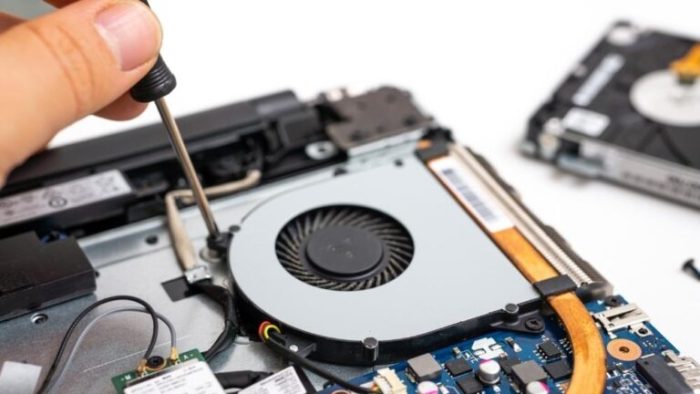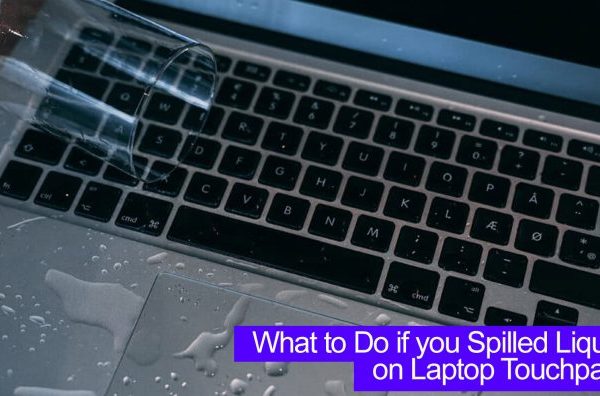Laptops have become an essential part of our lives, and we rely on them for work, entertainment, and communication. One of the critical components in a laptop is the fan, which helps to dissipate heat generated by the internal components. But what if you don’t have a fan on your laptop? Is it possible to use it without one? In this article, we will explore the possibility of using a laptop without a fan and the potential risks associated with it.
Let’s dive in!
Understanding Laptop Fans
A laptop fan is a crucial component of a laptop’s cooling system that helps to prevent the device from overheating. It works by drawing cool air into the laptop and expelling hot air out of the device through the vents. The cooling system in a laptop helps to regulate the temperature of the processor and other internal components, which helps to keep the device running smoothly.
There are several different types of laptop fans, including centrifugal fans, bladeless fans, and axial fans. Centrifugal fans are commonly used in laptops and work by creating a flow of air through the use of a rotating impeller. Bladeless fans use a technology known as air multiplication to create a flow of air without the use of blades. Axial fans work by drawing air through the device and expelling it out of the back of the laptop.
Different laptop brands use different types of fans, with some manufacturers opting for proprietary designs. Examples of laptop fans include the Toshiba Satellite A305 series fan, the Dell Inspiron 15 3521 fans, and the HP Envy 15-j000 series fan.
Reasons Why a Laptop Fan is Important
Laptop fans are important because they play a critical role in keeping your laptop cool and preventing damage to its components. Here are some reasons why a laptop fan is important:
Cooling the laptop’s components: The internal components of a laptop generate a lot of heat when in use. A fan helps to circulate air and cool these components, ensuring that they don’t overheat and malfunction.
Preventing overheating and damage to the laptop: Overheating can cause permanent damage to a laptop’s components. A fan helps to regulate the temperature and prevent overheating, which can lead to costly repairs or even the need for a new laptop.
Extending the lifespan of the laptop: A laptop that is kept cool and running smoothly is likely to have a longer lifespan than one that overheats and experiences frequent crashes.
Using a laptop without a fan is not recommended, as it can lead to these issues. Without proper cooling, the internal components of a laptop can become damaged, leading to poor performance or even complete failure.
For example, if you’re playing a graphics-intensive game or using a software program that puts a lot of strain on your laptop’s CPU, the laptop’s internal temperature can rise quickly. Without a fan to cool the laptop down, you may experience crashes, slowdowns, or even permanent damage to your laptop.
Can You Use a Laptop Without a Fan?
Well, the short answer is yes, but it’s not always a good idea.
While some laptops may have form factors that don’t require fans, it’s not recommended to run a machine that is heavy in resources without any kind of cooling mechanism. The fan plays a crucial role in keeping the laptop cool by bringing cooler air into the casing and blowing out hotter air away from sensitive parts. Without it, the risk of overheating is much higher, which could result in catastrophic failure, slow operations, or random program crashes. So we recommend fixing your laptop fan or completely replacing it.
However, there are exceptions to this rule. Small laptops that don’t use a lot of power may not need a fan to keep them cool. In these cases, the form factor might be small and efficient enough to prevent overheating without the need for a fan.
It’s important to note that most modern laptop fans are quiet enough not to bother the user. They should only get loud if the system detects heavy processes or undue heat, which might require immediate attention from the cooling accessories.
Risks of Using a Laptop Without a Fan
Using a laptop without a fan can pose several risks that can damage the laptop and affect its performance. Here are some of the potential risks:
Overheating and damage to the laptop’s components: A laptop generates a lot of heat while in use. If there’s no fan to cool down the internal components, the laptop can overheat and cause damage to the CPU, GPU, and other critical parts. This can lead to system instability, crashes, and even permanent damage to the laptop.
Reduced performance and speed: When a laptop overheats, it can cause the processor to slow down to prevent damage. This can result in reduced performance and slower speeds, making it difficult to run demanding applications and multitask efficiently.
Shorter lifespan of the laptop: Overheating can also reduce the lifespan of the laptop’s components. Without a fan, the laptop may not be able to dissipate heat effectively, leading to premature wear and tear of the internal parts.
Battery life: A fanless laptop may have a shorter battery life as it has to work harder to cool down the internal components, consuming more power in the process.
It’s important to note that while some laptops may be designed to operate without a fan, they are usually low-power devices used for basic tasks like browsing the web or checking emails. For more demanding tasks like gaming or video editing, a fanless laptop may not be suitable. Other than that if

How to know if The Laptop’s Fan is Working
- Firstly, listen to the faint hum of the fan when you’re using your laptop. The fan won’t always need to run, but when it does, it should sound like a quiet propeller in action.
- Secondly, feel for airflow near the vents of your laptop. Once the fan starts running, you should be able to feel the air being pushed out.
- Finally, you can also use software to check the internal temperature of your laptop. Some laptops will display this information on the screen when you start them up.
Keeping your laptop cool is crucial for its performance and longevity. So if you notice anything unusual, like excessive heat or loud fan noises, it might be time to investigate further. But if everything seems to be working fine, you can rest easy knowing your laptop is running smoothly.
Alternatives to a Laptop Fan
Cooling pads, undervolting, and replacing thermal paste are some of the alternatives to a laptop fan that can help keep your laptop cool.
Cooling pads
are external devices that have built-in fans to provide additional cooling to the laptop. They can be plugged into a USB port and can also act as a stand to improve ergonomics. These pads help to improve air circulation and dissipate heat, which helps to prevent overheating and reduce the risk of damage to the laptop’s components.
Undervolting
Undervolting is the process of reducing the voltage supplied to the laptop’s CPU, which can help to lower its temperature. This can be done through software applications that allow you to adjust the CPU voltage. However, this process should be done with caution as it can potentially harm the laptop if not done correctly.
Replacing thermal paste
Replacing thermal paste is another alternative to a laptop fan. The thermal paste is a material that helps to transfer heat from the laptop’s components to the heat sink. Over time, the thermal paste can dry out and lose its effectiveness, which can result in overheating. Replacing the thermal paste can help to improve heat transfer and reduce the laptop’s temperature.
While these alternatives can help to keep a laptop cool without a fan, they may not be as effective as a fan and may not be suitable for all laptops. It is important to check with the laptop manufacturer or a professional technician before attempting any DIY maintenance on your laptop.
Conclusion
A laptop fan plays a crucial role in maintaining the temperature and performance of a laptop. Without a fan, laptops are at risk of overheating, reduced performance, and a shorter lifespan. While there are some fanless laptops available on the market, they have limitations and are not suitable for demanding tasks. Alternatives to a laptop fan include cooling pads, undervolting, and replacing the thermal paste. However, these alternatives are not a substitute for a functioning fan. It is important to maintain your laptop fan and take action if you suspect it is not working properly. Always prioritize the safety and performance of your laptop by ensuring it has a functioning fan.
Frequently Asked Questions
Is it possible to use a laptop without a fan?
Yes, it is possible to use a laptop without a fan, but it comes with some risks and limitations.
Can a laptop function normally without a fan?
It depends on the laptop’s hardware specifications and the type of workload. Simple tasks such as browsing the internet or typing a document may not require a fan, but more intensive tasks such as gaming or video editing will require a fan to prevent overheating.
What are the risks of using a laptop without a fan?
The main risk of using a laptop without a fan is overheating, which can cause damage to the laptop’s components and reduce its performance and lifespan.
What are the alternatives to a laptop fan?
Some alternatives to a laptop fan include using a cooling pad, undervolting the CPU, and replacing the thermal paste. However, these alternatives may not be as effective as a fan and may have their own limitations.
How can I tell if my laptop is overheating without a fan?
Some signs of an overheating laptop include a hot keyboard, slowed performance, and loud fan noises (if your laptop has a fan). You can also use software to monitor your laptop’s temperature.


![Are gaming laptops good for programming? [Compressive Guide]](https://mobizilla.pk/wp-content/uploads/2023/09/23-600x396.jpg)


